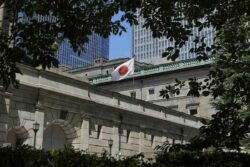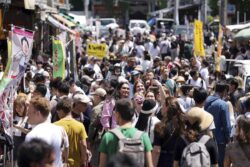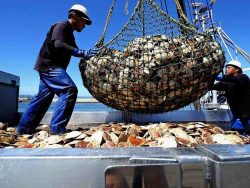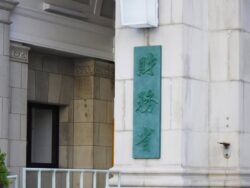15:00 JST, March 1, 2025
Soaring rice prices show no sign of abating. How can distribution blockages and speculative moves be addressed? The government must make use of the release of its rice reserves to stabilize prices.
In response to soaring rice prices, the government will release 210,000 tons from its stockpile of 1 million tons. In the first bidding to be held in early March, 150,000 tons will be sold to major rice distributors such as the National Federation of Agricultural Cooperative Associations (Zen-Noh).
The rice is expected to be on the shelves of supermarkets and other stores from late March.
The basic principle of the nation’s rice farming policy must be to stabilize rice prices while ensuring that producers can secure a certain profit and that consumers are not overburdened by rice prices.
Despite the fact that the specific amount to be released from the stockpile was decided on Feb. 14, the average supermarket price of a 5-kilogram bag remains about ¥3,900, which is about 90% higher than the previous year. The announcement of the release has shown no effect.
If the situation results in consumers, who are already struggling with their household budgets, shifting away from rice, the adverse impact on rice producers will be significant.
The price increase is said to be due to some traders buying up rice and holding off from selling for speculative purposes. There are differing views on how much the price will decline after the stockpiled rice reaches store shelves.
The production volume of rice for the 2024 harvest was 6.79 million tons, or 180,000 tons more than the previous year, but the amount collected by agricultural cooperatives and other organizations has decreased by more than 200,000 tons, in a phenomenon called “vanished rice.” The Agriculture, Forestry and Fisheries Ministry urgently needs to grasp the actual state of distribution.
If distribution blockages remain, there should be no hesitation to release additional rice. Careful dissemination of information is also required so as not to cause anxiety among those involved in agriculture.
Meanwhile, prices are rising across the board, and there have also been notable increases in the prices of fertilizers and production materials. There is a concern that if farmers are unable to secure an appropriate profit, the production base will be undermined. There is also a certain aspect that the rise in the price of rice is inevitable to some extent.
The government’s decision to buy back an amount of rice equal to the amount released from the stockpile within a year was probably made out of consideration for producers, to keep them from being put in a difficult situation by excessively low prices.
However, unless the government counters speculative moves, the effect of releasing the stockpiled rice could be undermined. The buyback plan should also be implemented flexibly.
To stabilize rice prices, the government has been adjusting production by providing subsidies for crop diversification even after a program to reduce rice acreage was ended in 2018. However, the latest developments also revealed that the government is incapable of flexibly responding to sudden increases in demand.
In major rice-producing areas such as Niigata Prefecture and Hokkaido, there is a growing trend to increase the acreage for rice production for the 2025 harvest. It will also be important to allow for more production than in the past.
(From The Yomiuri Shimbun, March 1, 2025)
Related Tags
"Editorial & Columns" POPULAR ARTICLE
-

Violations of Subcontract Law: Major Automakers Must Eliminate Old Practices
-

Local Governments’ Tax Revenues: Devise Ways to Correct Imbalances in Tax Sources
-

Heavy Rains in Asia: Support for Victims, Flood-Control Measures Urgently Needed
-

5 Japanese Business Dinner Mistakes to Avoid — and What They Taught Me About Business in Japan
-

New Nuclear Threat: China Seeking to Follow U.S., Russia in Military Expansion
JN ACCESS RANKING
-
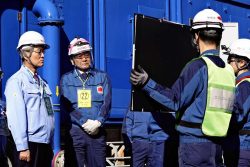
Keidanren Chairman Yoshinobu Tsutsui Visits Kashiwazaki-Kariwa Nuclear Power Plant; Inspects New Emergency Safety System
-
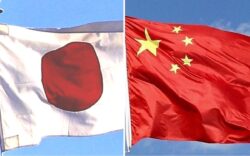
Imports of Rare Earths from China Facing Delays, May Be Caused by Deterioration of Japan-China Relations
-

University of Tokyo Professor Discusses Japanese Economic Security in Interview Ahead of Forum
-
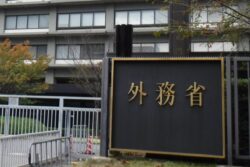
Japan Pulls out of Vietnam Nuclear Project, Complicating Hanoi’s Power Plans
-

Govt Aims to Expand NISA Program Lineup, Abolish Age Restriction







